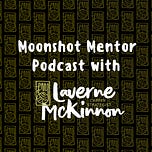Don’t waste a good failure. It can become the blueprint for your best practices.
If you’re anything like me, you’ve beaten yourself up when something didn’t go the way you had hoped, planned, or dreamed. But self-blame isn’t a strategy. It’s a trap.
A real strategy is learning how to assess what went wrong and why. From there, you can build new practices to reduce the risk of failing for the same reason.
Case Study
When I met with an A-list actor, let’s call him Ricardo, I was smitten. He was charming, charismatic, and had a compelling vision for the project that brought us together. And to be transparent, I was also longing to produce a film with a little high-profile pizzazz.
This was during the height of my career as an independent producer, pre-Covid, pre-lock-down. And frankly, I was wowed and intimidated by the Bel Air Hotel where we met for coffee — he was staying there while promoting his latest film.
Eight months later, I counted up all the hours of sweat equity: reading and meeting with writers, negotiating rights deals and partnership agreements, creative work sessions, a ton of research, and endless hand-holding since Ricardo was new to the world of producing. Aaannnd I realized we were spinning our wheels. The partnership on this project was failing to produce real results.
Failure, Loss, Mistake—Oh My.
So it’s not like this was the first time something like that has happened to me or anybody else. Projects fall apart all the time. Historically, though, I would internalize the feeling of being a failure and then try to outrun it by working harder.
What needed to happen was redefining my relationship with failure so that it didn’t own me. So I didn’t keep avoiding risks, resisting change or playing small.
How did I do this? Well, the first step I took was to understand the differences between failures, mistakes, and losses because they are not the same or interchangeable.
Failure is about outcomes. You aimed for something and didn’t reach it. It might involve missteps, but it can also involve forces outside your control like systems, timing, bias, budget cuts, industry shifts. Life.
Mistakes are about action. A decision didn’t pan out. A miscalculation. A wrong turn. Mistakes are usually unintentional and often repairable. They're part of learning, not a verdict on your worth.
Loss is about absence. Something ended, changed, disappeared, or was taken away. You might feel sadness or grief because something meaningful is now gone.
We mix these up all the time.
You get laid off (loss) and tell yourself it’s because you weren’t good enough (failure).
You make a decision that doesn’t work out (mistake) and convince yourself you’ll never succeed (failure).
You aim for something and miss the mark (failure) and then feel like something important has been taken from you (loss).
Turning Failures Into Best Practices
When a clear outcome doesn’t happen—when a project falls apart, a deal doesn’t close, or a plan doesn’t work—do a post-mortem. That just means taking time to reflect and gain deeper insight into what happened. In practice, you might ask yourself:
What went well, and why?
What didn’t, and why?
What beliefs or assumptions led me (or us) here?
What would I do the same?
What would I do differently next time?
Focusing on data over feelings is how failure becomes useful. The feelings fuel our curiosity and drive us to dig for facts.
The key to reducing future risk is identifying what you’ve learned and turning it into a best practice.
Post Ricardo: What I Learned
When I did a proper post mortem post Ricardo, here’s what I took away:
What went well: The process of reading and meeting with writers. It was comprehensive, thoughtful, and played to both our strengths—Ricardo and I both enjoy reading and having creative conversations. We reviewed over 50 writers and met with 5, which gave us a wide range of perspectives and ideas.
What didn’t go well: Choosing a writer. We weren’t aligned on how much experience the writer needed to develop, sell, write, and produce the project. We had different expectations.
What assumptions got in the way: I assumed Ricardo was more knowledgeable about the development process and that it can take time to find the right creative match. Ricardo, on the other hand, had a tight timeline to lock in a writer before starting production on a big action film that would take him out for several months. He also misunderstood the role of the writer, expecting them to simply execute his vision. At one point, he even asked, “Why do they all have different ideas?”
What I’d do the same: I’d keep the process of researching, reading, and meeting with writers. It was efficient, comprehensive, and well-received—agents and managers told us they appreciated the quick turnarounds and clear communication.
What I’d do differently boils down to two lessons—each now a best practice.
First, I’d establish what’s known in coaching as a designed alliance: taking unspoken expectations and making them explicit from the start. (Here’s a blog on how to design an alliance). This helps set the partnership up for success. For example: let’s use email rather than text for communication, no interrupting during creative meetings, and let’s agree on a clear, written vision for the project before meeting with writers. New best practice: create a designed alliance from the start.
Second, I realized I got excited about the opportunity to work with a high-profile actor and ignored the part of me that wasn’t truly excited about the creative concept itself. New best practice: I have to feel at least 80% passionate about the project, not just the person attached to it.
How to Frame Best Practices
When you create best practices, framing matters. Language rooted in positive intent is easier to remember, act on and has the most impact.
For example: Instead of saying, “Don’t forget to pick up ice,” say, “Remember to pick up ice.”
Studies show our brains process affirmative direction more easily. The same applies to our work.
A best practice like “Don’t work with project managers who are difficult” is vague and fear-based. But “Partner with collaborators who respect boundaries and timelines” is clear, empowering, and actionable.
Bottom Line
Remember where we started: Don’t waste a good failure.
It’s easy to slip into self-blame (or blame others) when things don’t go the way we hoped, planned, or dreamed. But when we take time to reflect, examine what happened, and name what we’ve learned, failure becomes a powerful tool. Not a verdict about your talent, idea, competency or capability.
Building a set of best practices that reflect your values, your wisdom, and your growth doesn’t just protect you from future failures, it creates more room for creativity, better decisions, and long-term resilience.
Perks for Paid Subscribers
Moonshot Mentor paid subscribers get weekly journal prompts to spark personal and professional growth, guided meditations to help them center, reflect, and reset, plus exclusive career development and career grief workshops that build clarity, resilience, and momentum.
Listen to this episode with a 7-day free trial
Subscribe to Moonshot Mentor with Laverne McKinnon to listen to this post and get 7 days of free access to the full post archives.











